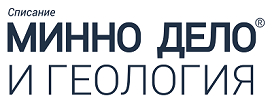Гл. ас. д-р инж. весела Петрова
РЕЗЮМЕ
Социалният лиценз за работа е подход, който има потенциал да трансформира минерално-суровинния отрасъл. Значението му все повече нараства, тъй като целта му е да намали всички рискове по време на жизнения цикъл на минния проект. През последните две десетилетия изследванията в областта на социалния лиценз за работа навлизат значително, налагайки нови подходи, модели и теоретично развитие. Настоящата публикация има за цел да изясни същността на термина, анализирайки развитието му през годините. Проучена е детайлно научната литература в областта, като в България тя е оскъдна, което отваря широко поле за работа у нас, особено в практически аспект. Направени са разграничения какво точно представлява и какво не социалния лиценз за работа, индикаторите, според етапа на лиценза в момента, както и стъпките за неговото придобиване. Маркирани са различните мрежови общности и техните особености.
КЛЮЧОВИ ДУМИ
социален лиценз за работа, местни общности, устойчиво развитие
ЦЯЛАТА СТАТИЯ В PDF ФОРМАТ
РЕФЕРЕНЦИИ
1. Agrawal, A., Gibson, C.C. (1999) Enchantment and disenchantment: the role of community in natural resource conservation. World Development 27, 629–649.
2. Ali, S. H. (2009) Treasures of the Earth: Need, Greed, and a Sustainable Future. Yale University Press, New Haven, Connecticut.
3. Ballard, C., Banks, G., 2003. Resource wars: the anthropology of mining. Annual
4. Barton, B., 2002. Underlying concepts and theoretical issues in public participation in resources development. In: Zillman, D., Lucas, A., Pring, G. (Eds.), Human Rights in Natural Resource Development: Public Participation in the Sustain- able Development of Mining and Energy Resources. Oxford University Press, Toronto, Ontario, pp. 77–119.
5. Berkes, F., George, P., Preston, R.J., 1991. Co-management: the evolution in theory and practice of the joint administration of living resources. Alternatives 18,
6. Boutilier, R., & Thomson, I. (2011). Modelling and measuring the social license to operate: Fruits of a dialogue between theory and practice. Retrieved 11 June 2020 from https://socialicense.com/publications/Modelling%20and%20Measuring%20the%20SLO.pdf.
7. Bowen, F., Newenham-Kahindi, A., Herremans, I., 2010. When suits meet roots: the antecedents and consequences of community engagement strategy. Journal of Business Ethics 95, 297–318.
8. Brereton, D. (2004). Emerging forms of Corporate and Industry Governance in the Australian Mining Industry’. Regulation : enforcement and compliance. Edited by Johnstone, Richard and Sarre, Rick. Canberra, ACT: Australian Institute of Criminology.23-35.
9. Brunckhorst, D.J., 2002. Institutions to sustain ecological and social systems.
10. Deloitte Global Services Limited, 2010. Tracking the Trends 2011: The Top 10 Issues Mining Companies will Face in the Coming Year. Available from: /http://www.deloitte.comS.
11. Diduck, A., 2010. Incorporating participatory approaches and social learning. In: Dundee Precious Metals, Sustainability report, 2018.
12. Eden, S., 1996. Public participation in environmental policy: considering scientific, counter-scientific and non-scientific contributions. Public Understanding of Science 5, 183–204.
13. Ernst and Young, 2011. Business risks facing mining and metals 2011–2012.
14. Fidler, C., Hitch, M., 2007. Impact and benefit agreements: a contentious issue for environmental and Aboriginal justice. Environments Journal 35, 49–69.
15. Funtowicz, S.O., Ravetz, J.R., 1993. Science for the post-normal age. Futures 25, 739–755.
16. Gibson, R.B., Hassan, S., Holtz, S., Tansey, J., Whitelaw, G., 2005. Sustainability Assessment: Criteria and Processes. Earthscan, London, UK.
17. Gunningham, N.; Kagan, R.A.; Thornton, D. Social license and environmental protection: Why businesses go beyond compliance. Law Soc. Inq. 2004, 29, 307–341
18. Hilson, G.; Murck ,B.Sustainable development in the mining industry: Clarifying the corporate perspective. Resour. Policy 2000, 26, 227–238.
19. Joyce, S.; Thomson, I. Earning a social license to operate: Social acceptability and resource development in Latin America. CIM Bull. 2000, 93,49–53.
20. Kemp, D.,2010. Community relations in the global mining industry: exploring the internal dimensions of externally orientated work. Corp. Soc. Respon. Environ. Manag. 17,1-14. https://doi.org/10.1002/csr.195.
21. Lynch-Wood, G., & Williamson, D. (2007). The Social Licence as a Form of Regulation for Small and Medium Enterprises. Journal of Law and Society, 34(3), 321-341. Retrieved May 31, 2021, from http://www.jstor.org/stable/20109752
22. McAllister, M.L., Fitzpatrick, P.J., 2010. Canadian mineral resource development: a sustainable enterprise?. In: Mitchell, B. (Ed.), Resource and Environmental Management in Canada: Addressing Conflict and Uncertainty, 4th edn. Oxford University Press, Toronto, Ontario, pp. 356–381.
23. McKenzie, N., K. Morris, 2002, Should we have a co-ordinated and integrated database for terrestrial fauna survey data for Western Australia? Government research view. Royal Society of Western Australia.
24. Nelsen, J., M. Scoble (2006) Social License to Operate Mines: Issues of Situational Analysis and Process.
25. Thomson, I. ,Boutilier, R.G., 2011. The social license to operate. In: Darling, P. (Ed.), SME Mining Engineering Handbook, pp.1779–1796 Littleton.
26. Veiga, M.M., Scoble, M., McAllister, M.L., 2001. Mining with communities. Natural Resources Forum 25, 191–202.
27.. Waye, A., Young, D., Richards, J.P., Doucet, J.A., 2010. Sustainable development and mining—an exploratory examination of the roles of government and industry. In: Richards, J.P. (Ed.), Mining, Society, and a Sustainable World. Springer, New York, NY, pp. 151–182.
